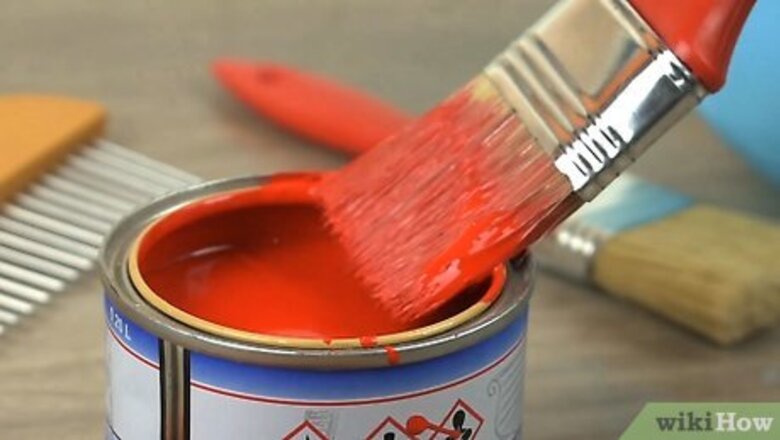
views
X
Expert Source
Patrick CoyePainting Specialist
Expert Interview. 22 July 2020.
If you’ve allowed the paint to dry out in your brush, a solvent-based brush cleaner can do the trick.
Washing out Fresh Latex Paint

Scrape any excess paint off of the brush. Before you wash your brush, wipe the bristles on the inner rim of the open paint can a few times to scrape off as much paint as possible. Make sure you scrape both sides of the brush. Scraping off as much paint as possible will make the cleaning process faster and easier.
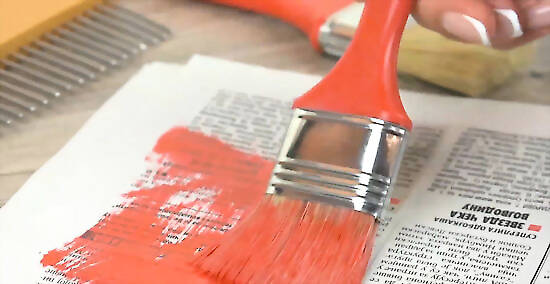
Wipe the brush with a piece of newspaper. Once you’ve scraped off as much paint as you can, wipe the brush off on some newspaper. This will help remove any remaining wet residue that didn’t come off when you scraped the brush. Keep wiping the brush on the paper until it stops leaving marks.
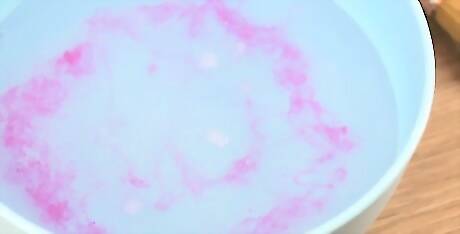
Fill a bucket with warm, soapy water. A mild dish detergent is ideal for this purpose. After filling a bucket with warm water, add a few drops of the detergent and mix it in. Alternatively, you can wash your brush in a sink under warm, running water.
Work hardened paint out of the bristles with a paintbrush comb. Dip a paintbrush comb in the bucket of soapy water and work the tines through the bristles of your brush. This will separate the bristles and loosen paint that is caught in between them. You can get a paintbrush comb at a hardware, home supply, or art supply store. Some painters prefer to use a wire brush rather than a paintbrush comb. However, the wires may damage your brush if you do this frequently.
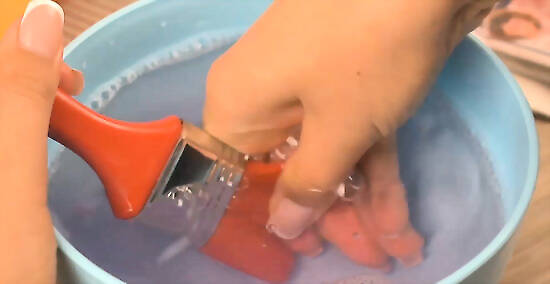
Bend the bristles with your fingers under the water. After working through the bristles with the comb, dip the brush in the bucket and massage it with your hand to remove any remaining paint. Bend the bristles back and forth to help loosen the paint as you rinse. Keep doing this until the brush looks clean. If you’re rinsing the brush under running water rather than in a bucket, add a couple of drops of detergent to the base of the bristles. Keep working the bristles with your fingers until the water runs clear.

Spin the brush to remove water from the bristles. Attach your brush to a brush spinner and depress the plunger to spin it inside an empty bucket. This will help remove the soapy water and any paint residue still remaining in the brush.Tip: If your brush has a round handle, you can spin it by quickly rolling it between your palms with the bristles facing down. You may need a mechanical spinner if the handle is flat. You can buy a brush spinner at a hardware, home, or art supply store. If you don’t have a brush spinner, shake the brush at the top of a bucket to get the excess water out.
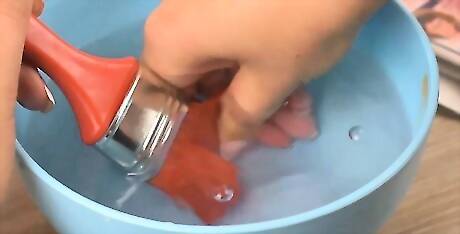
Rinse the brush in clean water. After spinning out the brush, place it in another bucket with clean water and give it a rinse. Work the bristles around with your fingers to get out any remaining paint and soap. You can also rinse the brush under running water. Watch to make sure the water runs clear.
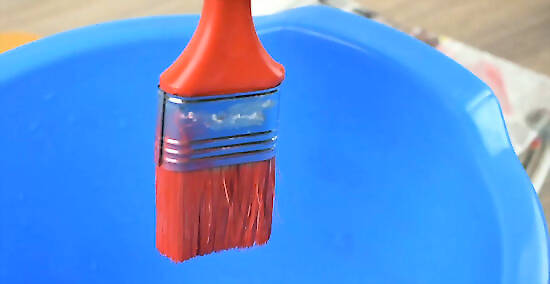
Spin the brush again. After rinsing the brush, give it another spin to dry it out. If you think there may be any stubborn paint remaining in the brush, repeat the rinse and spin process one more time. You may need to reshape the brush a little with your fingers after spinning it. If you don’t have a spinner, shake the brush over a bucket and then gently blot it dry with a clean rag or newspaper.

Wrap the brush in heavy paper to retain its shape. When you’re ready to put the brush away, wrap it up neatly with some thick parcel paper. Tie the paper in place with a bit of string. This will help keep the bristles nice and straight. Many brushes come with a cover over the bristles. If you have your brush’s original cover, use that instead of the paper. In retaining its shape, you want to keep all the bristles on your brush running in the same direction as opposed to letting them fray or open up.
Removing Dried Latex Paint
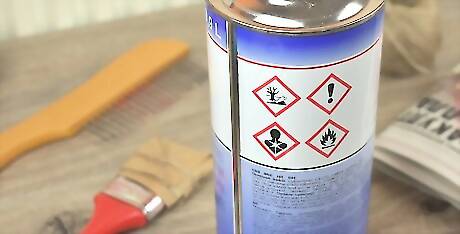
Purchase a solvent-based brush cleaner. If the latex paint has hardened out and dried into your bristles, washing it in soapy water may not be enough. Purchase a solvent-based cleaner, such as Klean Strip Brush Cleaner or Crown Brush Cleaner.Warning: Solvent-based cleansers are flammable and can create noxious fumes. Always work in a well-ventilated area and away from heaters, stoves, open flames, or anything that can create electrical sparks. Solvent-based cleaners will work for both natural bristle and synthetic brushes, and can remove a wide variety of paint types. There are also solvent-free brush cleaners on the market, but some of these are not suitable for natural brushes. Read the label carefully to determine if the cleanser is safe to use on your brush.

Place enough cleaner in a glass jar to cover the bristles. Take a little of your cleanser and pour it into a small jar, such as an empty jelly or pickle jar. Use enough so that the bristles of your brush will be fully submerged. You can also use a metal coffee can, but it won’t be as easy to see what’s happening inside the container if you do this.
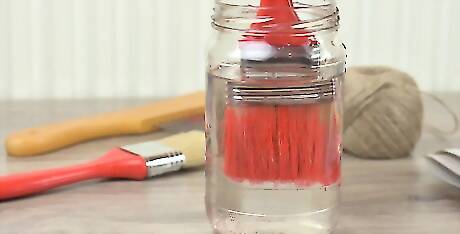
Suspend the brush upright in the cleaner. Submerge the bristles in the cleaning solution, but don’t let them rest on the bottom of the jar. This will cause the bristles to become misshapen as they soften. You may need to use a clip or a piece of wire across the top of the jar to suspend your brush. If you’re using a coffee can, cut a slit in the lid and pull the brush handle through. This will keep your brush upright and suspended. If you’re using a coffee can without a lid, you can suspend the brush in the can using a piece of coat hanger wire. Drill a hole through the handle of the brush above the ferule and slide the wire through it, then lay the wire across the top of the can with the brush suspended from it.

Cover the jar opening with aluminum foil. Once the brush is in the jar, put foil over the opening and around the base of the brush handle. This will keep the cleanser from evaporating while the brush soaks. If you’re soaking the brush in a coffee can with the lid on, you won’t need to cover the can with foil.

Let the brush soak overnight or until the bristles soften. The brush will need to soak for several hours in order to soften the dried-on paint. Leave the jar or can in a well-ventilated area overnight, then check to see if the bristles have become soft. If not, let them continue to soak for a full 24 hours. Depending on how much paint is dried into the brush, it may need to soak for a couple of days.
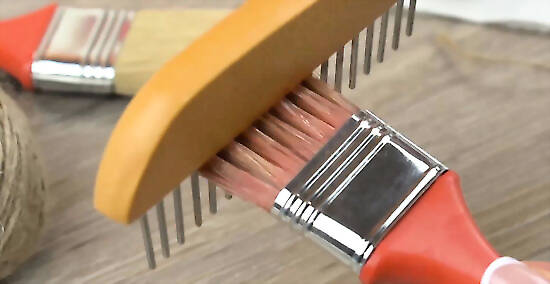
Use a paintbrush comb to remove excess paint. Once the bristles become soft and pliable, run a paintbrush comb through them. This will separate them and help remove the softened paint buildup. Since the solvent contains harsh chemicals, use gloves while you’re handling the brush. Durable gloves made of nitrile are the best option for handling most types of brush cleaning solvents.
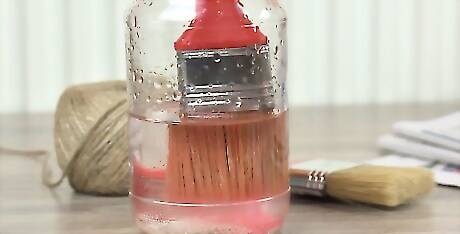
Soak the brush for another hour in fresh cleaner. After combing out the softened paint, fill the jar with a fresh batch of brush cleaner. Suspend the brush in the cleaner and cover the container, then let it sit for an hour.Warning: Always dispose of your paint cleaning solution and paint waste properly. You can let the paint solids settle, pour off the unused solvent, and reuse it. Allow the jar with the paint waste in it to dry outside, then throw it away.
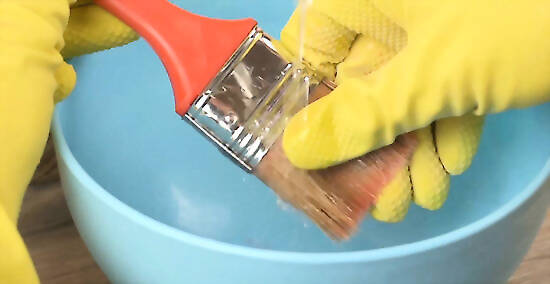
Work the brush with your hands while rinsing it in brush cleaner. Once your brush has soaked for an hour, rinse it in the cleaning solution. Massage the bristles with your fingers and bend them back and forth to loosen any remaining paint. Make sure to wear gloves while rinsing your brush in the brush cleaner!
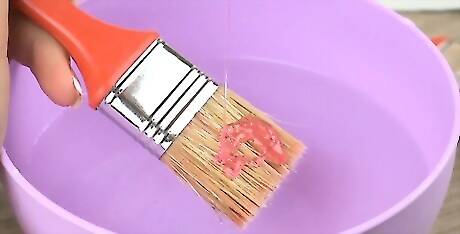
Wash the brush with warm, soapy water. Take your clean brush and rinse it in a solution of warm water and a few drops of a gentle soap. Plain dish detergent will work well. Gently work the bristles with your fingers to get out any remaining paint and solvent. Give the brush a quick rinse in fresh water when you’re done.
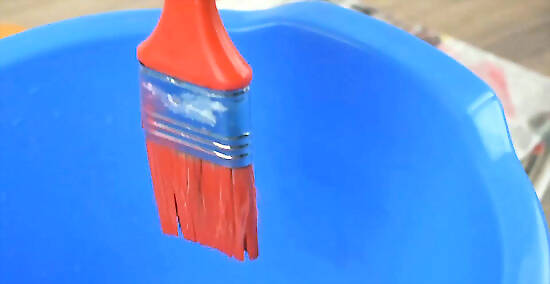
Spin the brush to remove excess water. Put the brush in a brush spinner and spin it once or twice. This will quickly remove any water from the bristles and ferule so that your brush can dry out. If you need to, gently reshape the brush with your fingers after spinning it. If you don’t have a spinner, shake the brush over a bucket to get the excess water out. You can dry it more by gently blotting it with a clean rag or a piece of newspaper.
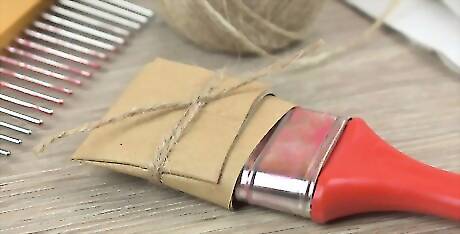
Put heavy paper around the bristles to preserve their shape. Once your brush is all clean, wrap it neatly in some parcel paper and tie it loosely with a string. This will help your brush hold its shape and stay in good working order. Alternatively, you can put the brush’s original cover back on if you still have it.















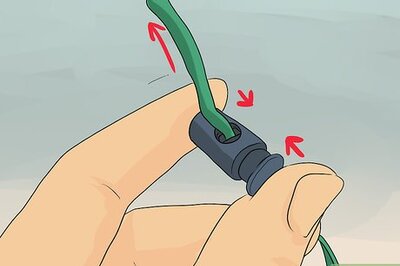

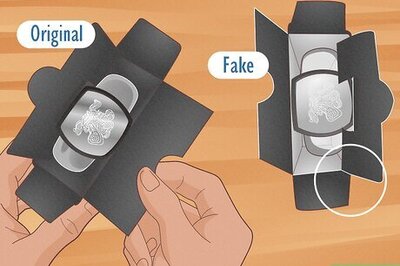

Comments
0 comment